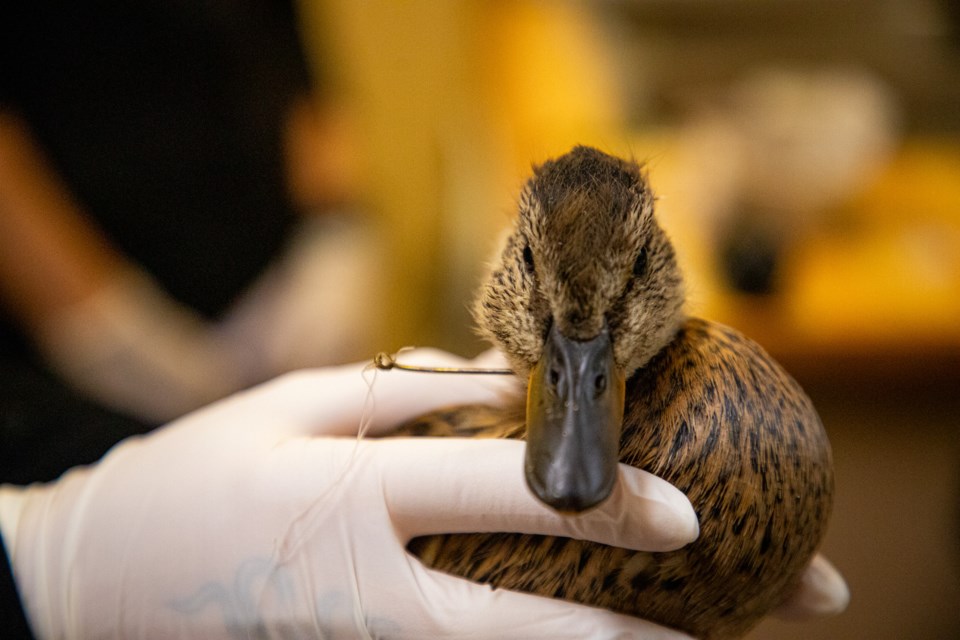As the outdoor recreation season kicks off, the Wildlife Rescue Association of BC is seeing an alarming surge in severe wildlife injuries caused by discarded fishing gear. In the past few weeks, the organization has received eight reports of wildlife injured by fishing gear at lakes across Metro Vancouver.
One case involved a juvenile mallard duck, found with a sharp fishhook piercing through their right cheek and into their beak. Another was a goose whose wing and leg were entangled in a fishing line causing significant lacerations. In a third scenario, a crow with fish line wrapped tightly around their leg and chest has continued to evade capture.
“Rescuing birds that have become entangled in fishing line or swallowed a fishing lure, and are still flighted is an incredibly challenging, and sometimes impossible task. It involves very careful planning, extensive resources and a lot of luck,” said Jackie McQuillan, the organization’s support centre manager “They are amongst our most difficult rescue scenarios, and why prevention really is the key.”
Herons, cormorants, loons, gulls and all other water-loving birds are at great risk of injuries from discarded fishing line and hooks. Unfortunately, they often swallow the hooks when foraging for fish and get caught up in the invisible line that is left in the water and adjacent habitat.
“Pollution of any kind is incredibly deadly for wildlife. These cases highlight the profound impact human actions can have on urban and other wildlife. Together, we are responsible for the well-being of our local wildlife as we co-exist together,” said McQuillan.
The Wildlife Rescue Association of BC strongly encourages the public to be aware of what one leaves behind when venturing outdoors this summer and to pick up any litter they find, even if it’s not their own, and dispose of it in designated places. Many local lakes now have specific receptacles for discarded fishing line.
If you find a bird entangled or injured by discarded fishing gear, please contact the organization’s support centre at .
This article was written by Elin Molenaar, the communications assistant at Wildlife Rescue Association.




